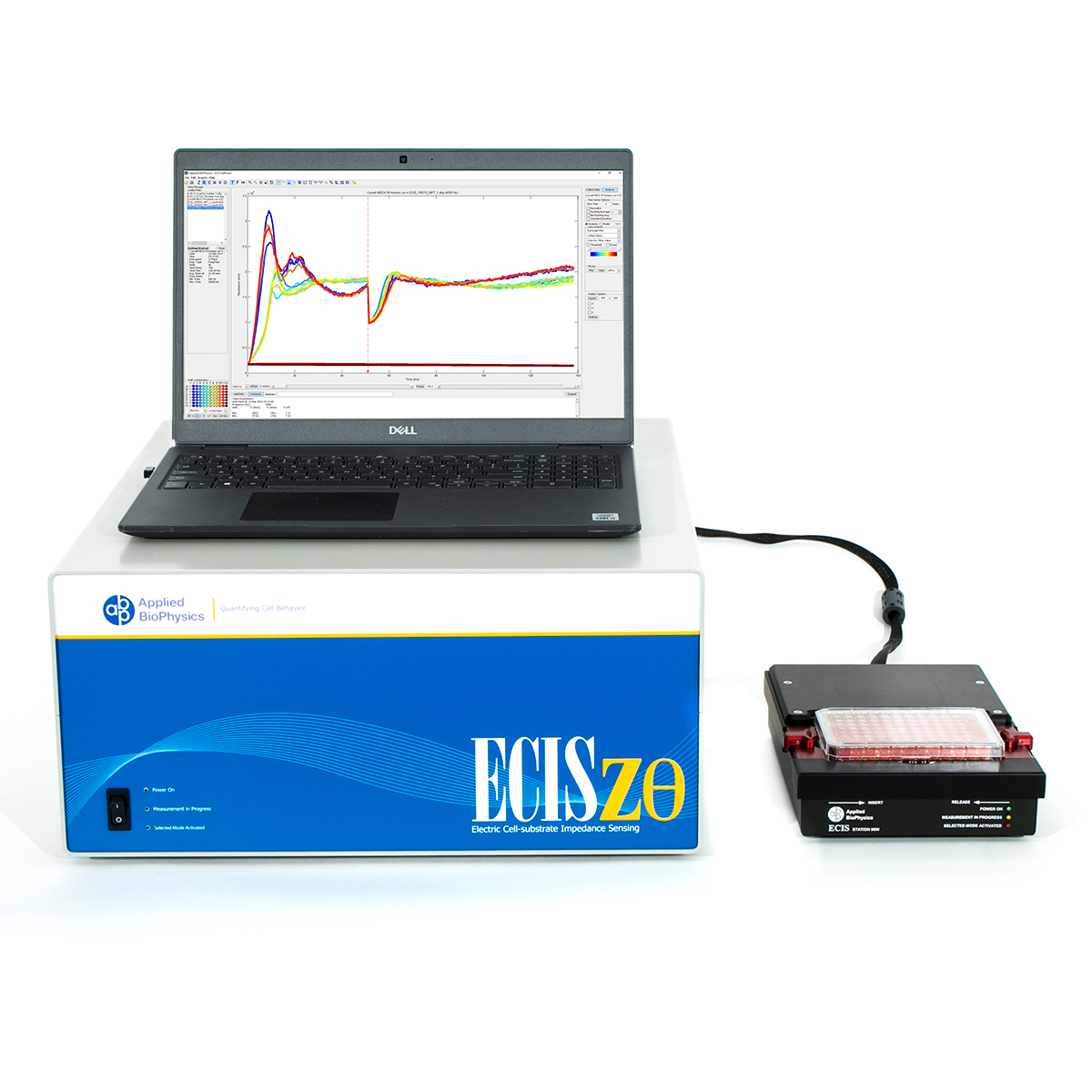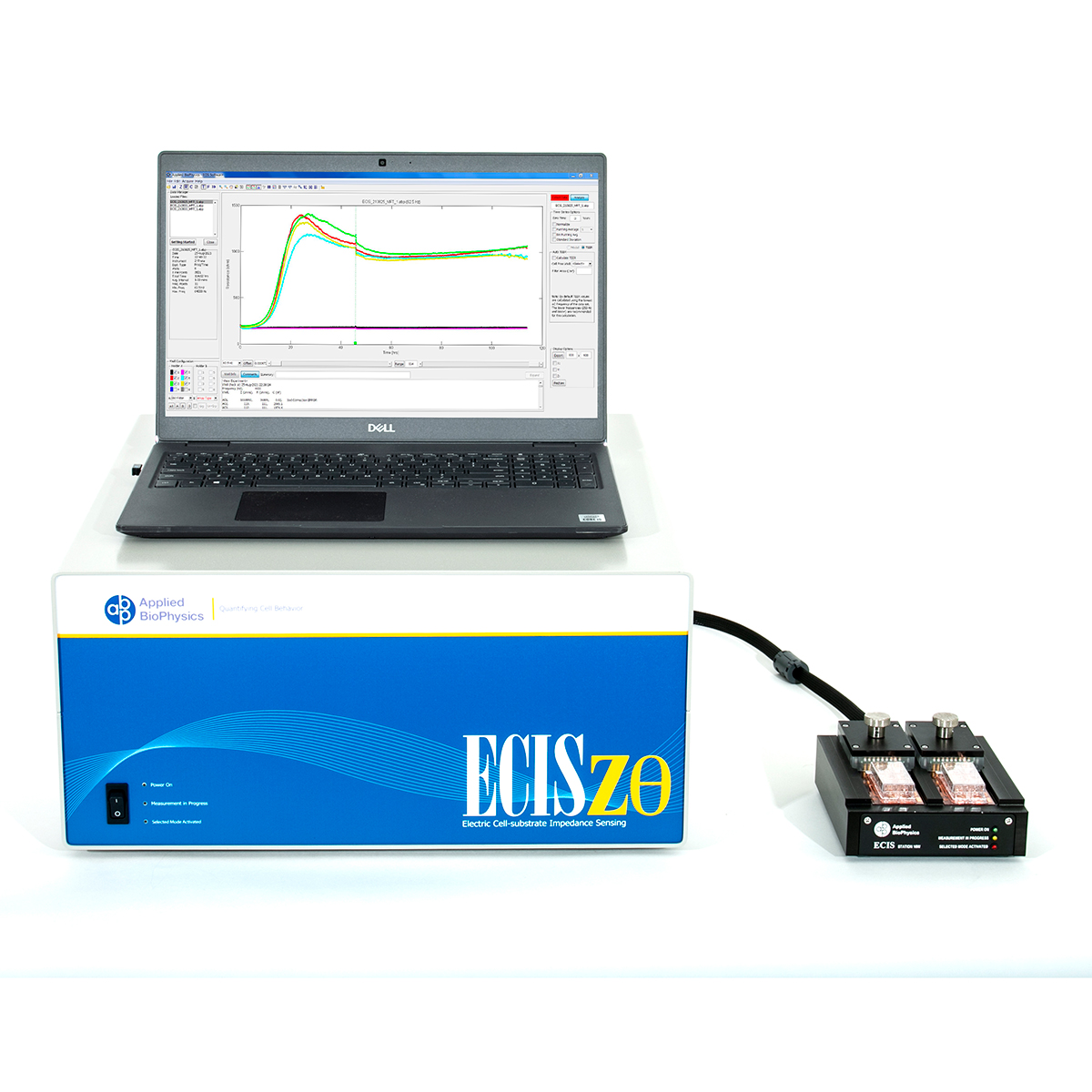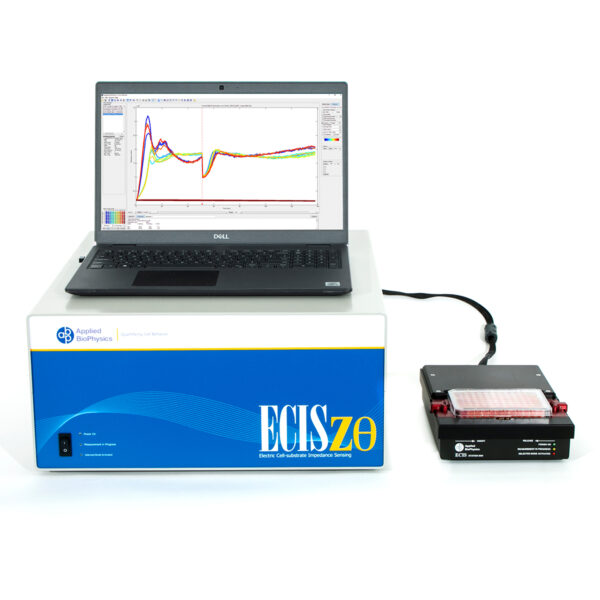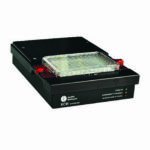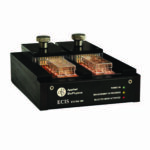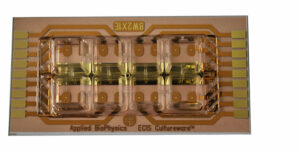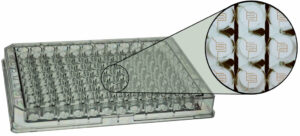The ECIS® Z-Theta is Appllied Biophysics' most advanced all-in-one instrument with a distinct method of accurately measuring cellular behaviors including proliferation, migration, barrier function, attachment, and much more. Not only is the ECIS Z-Theta capable of a multitude of assays, it’s all done in real time, giving it the edge in impedance-based assays.
The ECIS® ZƟ (Z Theta) is capable of noninvasively monitoring cell behavior in real-time using electric cell-substrate impedance sensing (ECIS). By applying an alternating current across patterned gold electrodes, a voltage potential is created which is then measured by the system. When cells cover these electrodes, the current is then impeded in different manners depending upon the overall cell morphology.
Upon stimulation of cell function, resulting responses in cell morphology will alter the impedance, revealing quantifiable differences. The ECIS Z-Theta can then convert the complex impedance into series resistance and capacitance, allowing for more accurate data of the cell behavior, making it an advanced form of cellular impedance-based assays.
Benefits
- Automated measurements of cell proliferation, morphology, barrier function, attachment, etc.
- 16 or 96 wells
- Choice of a wide range of AC frequencies*
- Data recorded and visualized in real time under incubator conditions
- Long-term data collection capabilities
- Non-invasive & label free
- Highly reproducible
- User Friendly software
- Data output in CSV, excel or graphical (jpg, tif)
- Multiple array selection
System Includes:
- 16 and/or 96 well station
- External control module
- Laptop PC
- ECIS control, acquisition, and display software
- Elevated field module (EFM) for automated cell migration and electroporation
- Twelve 8-well and/or six 96-well consumable electrode arrays
*The ECIS Z-Theta uses a range of AC frequencies from 100 – 64,000 Hz to calculate time course changes in cell behavior including measurements of permeability of the cell layer, constricted flow underneath the cells, and the membrane capacitance. And with multiple options in size of electrodes and patterns of the available arrays, the ECIS Z-Theta is able to detect morphological changes from subtle variations in small populations of cells to widespread population changes such as cell proliferation.
